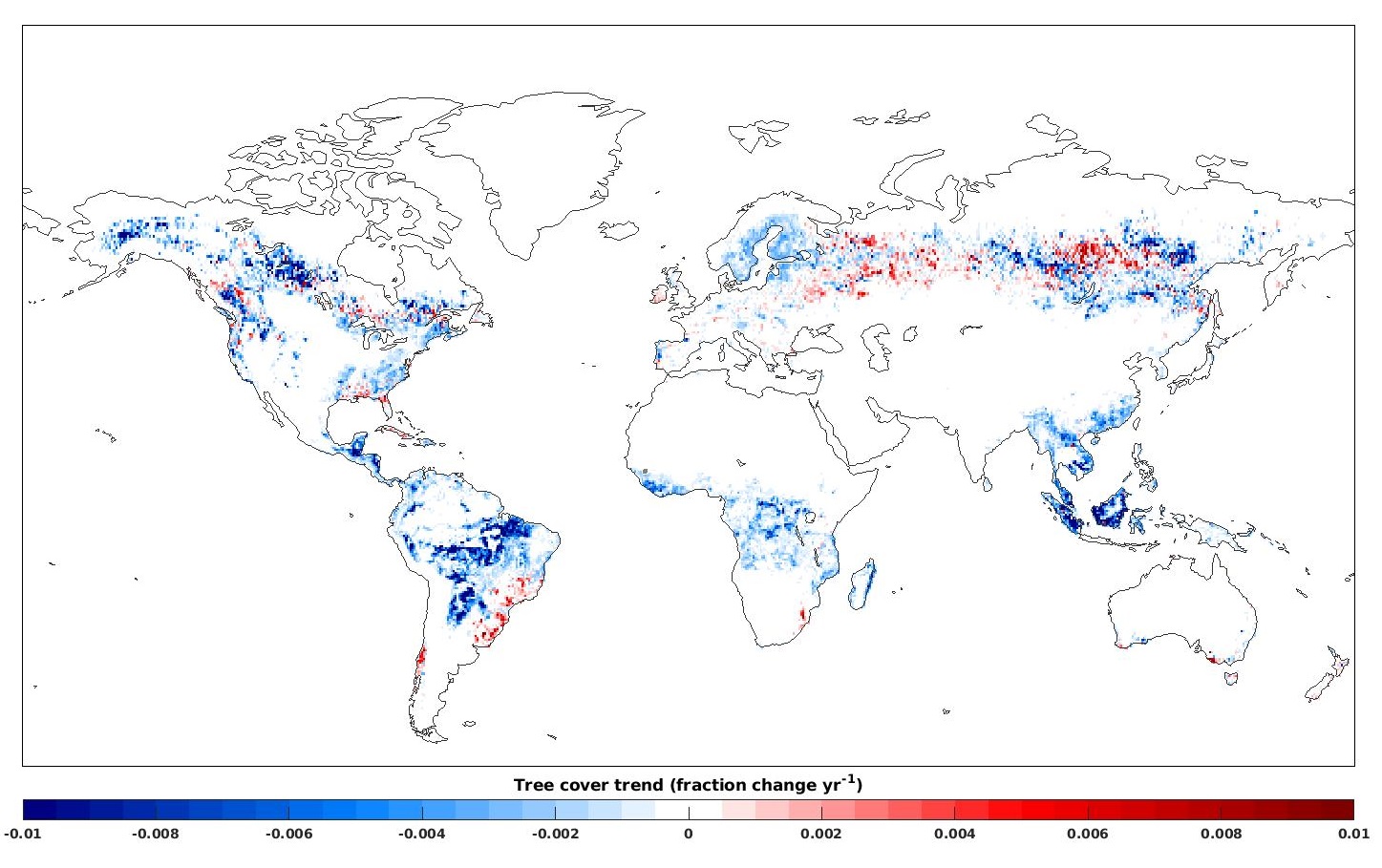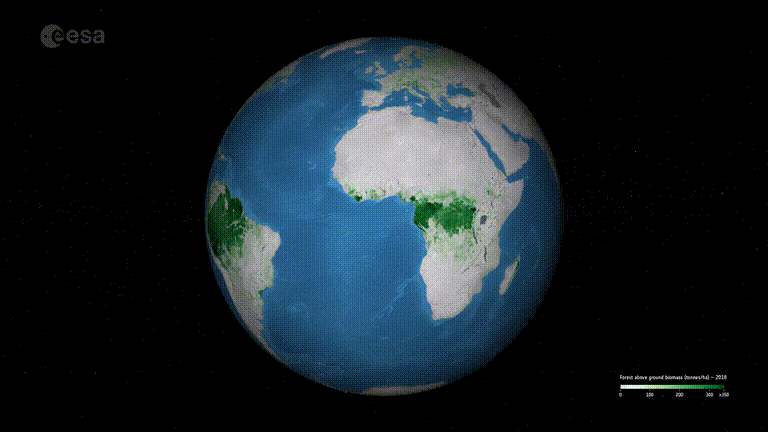March 21st is International Forest Day, an opportunity to celebrate and raise awareness on the importance of all types of forests. Trees are undeniably an essential part of the entire Earth system. They support virtually all land-based ecosystems and biodiversity, stabilise and fertilise the soil, capture large amounts of the greenhouse gas carbon dioxide, provide even humans with generous amounts of delicious and nutritious food. Not to mention they have a profound psychological effect on us. Trees and plant life have positive effects on people’s mental health and well-being. But, how much do you know about them?
At the Royal Belgian Institute for Space Aeronomy, we are particularly interested in how trees affect the Earth’s atmosphere. Their most important and well-known contributions are that they absorb CO2 and deliver oxygen. However, all types of vegetation also release biogenic volatile organic compounds (BVOCs), in other words, gases composed of molecules containing carbon and hydrogen atoms bound together. Among BVOCs, there is one that we should study more closely: isoprene.
What is isoprene and why does it matter?
Isoprene is the most important BVOC emitted by terrestrial vegetation, accounting for up to 70% of all the released hydrocarbons. The magnitude of its global annual emissions is similar to that of methane. The isoprene molecule is synthesized by the foliage of most plants. It plays a protective role against thermal damage and oxidative action of ozone and other reactive oxygen species responsible for impeding the photosynthetic capacity of the plant.
release. In the presence of high levels of nitrogen oxides, isoprene
can lead to the formation of large amounts of ozone, which is a
pollutant, a greenhouse gas and can cause health problems.
In itself, isoprene is not a pollutant but it has a strong influence on air quality and tropospheric chemistry and thereby, it has an indirect impact on climate. It is very reactive, with a chemical lifetime of the order of minutes to hours, and drives many complex chemical reactions in the atmosphere, and not always welcome ones. Actually - and maybe not surprisingly -, it is human activity that poses a problem, being responsible for the emission of large amounts of nitrogen oxides (NOX) through industrial processes and transportation. In the presence of high levels of NOX, one isoprene molecule can lead to the formation of many tropospheric ozone molecules, which is both a pollutant and a greenhouse gas. However, where there is very little NOX, isoprene emissions from plants can, in some instances, reduce tropospheric ozone concentrations.
In addition, isoprene also affects the growth of secondary organic aerosols, tiny particles that pose significant environmental risks such as health problems and visibility degradation. Regarding the climate, isoprene has multiple impacts: it reduces the oxidizing power of the atmosphere and therefore increases the lifetime of methane, a greenhouse gas known to be 25 times more potent than CO2, and it contributes to the formation of ozone and aerosols, both prime agents of radiative forcing of the Earth’s system.
Because of their role in air quality and tropospheric chemistry, isoprene emissions, their oxidation in the atmosphere, and how they are affected by the warming climate and land use changes are issues of prime importance addressed by researchers at BIRA-IASB.
Monitoring isoprene emissions: a challenging task
It is clearly established that meteorological conditions drive biogenic isoprene emissions, most notably temperature and solar radiation. To put it simply, warm and sunny weather leads to high emissions. But it also depends on the type and abundance of vegetation. In order to make accurate estimates of isoprene fluxes all over the globe, scientists need to know as precisely as possible how much and what type of land cover (e.g. forest, shrub, grass, crop) is present. For instance, broadleaved trees emit on average up to 10,000 times more than crops, but emissions from maple trees are negligible compared to that of oaks, poplars and eucalyptus. Although the precise plant speciation matters very much, unfortunately, such a specific knowledge is only available for limited areas in the U.S.A., Europe or Australia.
Fun fact, counting every single tree one by one would take up about one million years, provided that you could count one per second 24/7 (based on the estimate of 3 trillion trees from a study by Crowther et al.).
While direct satellite observations of isoprene are still in the early stages of development, inventories rely on state-of-the-art models, such as the MEGAN model to estimate biogenic emissions. Current emission inventories are based either on modelled and dynamic vegetation maps or on satellite-based and static maps. At the global scale, the emissions range between 350 and 800 millions of tons per year. However, the impact of land use practices such as deforestation, afforestation, urbanization, logging, fires and so forth, on those emissions is still highly uncertain. According to the 2020 report from the Food and Agriculture Organization of the United Nations, there was a net loss of 250 000 km2 of forest coverage globally between 2015 and 2020. In their study, Crowther et al. estimated that approximately 15 billion trees are cut down each year.
The team of scientists from BIRA-IASB is the first to account for a dynamic, satellite-based land cover dataset to estimate isoprene emissions and their long-term evolution. To distinguish between the different land cover types and to track changes in the global land cover, in particular the tree population, they used a ultra fine spatial resolution map (30 x 30 m²) of the tree cover distribution, from the Global Forest Watch (GFW) dataset, along with the MODIS dataset for the other land cover types.
“The GFW dataset was found to be a great asset to track changes in tree covers occurring at small scales”, says Beata Opacka, who led this study. “This is particularly important in sub-Saharan Africa, for example, where cuts of small parcels of forest for conversion to smallholders or for the need of fuel wood are the leading causes of deforestation”, she adds. When comparing the GFW dataset to national inventories, the study showed that the increasing trends in forest area reported by some national inventories (e.g., US and China) are contradicted by the satellite data, which indicate a decline in those countries. This is largely because some countries assimilate seedlings and new trees as forest, while the satellite dataset does not, since it applies a threshold on the height of trees (minimum 5 meters).

Fun fact, more than 800 hundreds of definitions of forest are in use worldwide! It’s difficult to wrap one’s mind around.

What is the impact of land cover changes on isoprene emissions?
In their study, using the satellite-based GFW dataset, the BIRA-IASB scientists estimated the global isoprene emissions at 350 millions of tons per year on average over 2001-2016. This lies at the low end of the current estimates. They used their model to show that without the effect of land cover changes, isoprene emissions would have increased at a rate of about 10% per decade, due to global warming.
Models are valuable tools that allow setting up an experiment, in order to answer questions that have been left hanging so far. For instance, what is the impact of the land cover changes on isoprene trends?
When we do consider the land cover changes, the model shows a strong drop in the global isoprene emission trend, from about 10% to 6% per decade. The land cover changes thus have a mitigating effect, mainly due to the decline in tree cover at a global scale, especially in the Tropics. However, there are regions where the effects of land cover changes outweigh the emission increases due to global warming. As an example, the emission reduction calculated for Sierra Leone and Madagascar is four- and seven-times as large as the increasing trends due to meteorology, respectively. In Brazil and Indonesia however, despite the substantial losses in tropical trees, positive trends in isoprene emissions are found, mainly driven by rising temperature and solar radiation.
In closing
The Earth system and its climate are largely regulated by land-atmosphere interactions. Understanding and quantifying their magnitude, trends and impacts on the Earth system represent major scientific challenges that require the use of global observations complemented by high-quality ground-based and in situ measurements and advanced modelling tools that keep pace with scientific knowledge. The integration of Earth Observation (EO) data in models has demonstrated its potential for addressing key questions related to the budget and evolution of atmospheric components at global to regional to local scales. The atmospheric monitoring capabilities are growing rapidly to further address uncertainties in land-atmosphere interactions.
By gaining the most thorough understanding of the system we are influencing so greatly, we can guide our steps towards restoring a balance. We can start today, by celebrating the International Day of Forests and communicating about their importance in the Earth system.
Acknowledgements
This research is part of the ALBERI project, funded by the Belgian Earth Observation STEREO III programme.
Further reading
- Opacka, B., Müller, J.-F., Stavrakou, T., Bauwens, M., Sindelarova, K., Markova, J. and Guenther, A. B.: Global and regional impacts of land cover changes on isoprene emissions derived from spaceborne data and the MEGAN model, Atmos. Chem. Phys. Discuss. [preprint], https://doi.org/10.5194/acp-2021-95, 2021.
- Bauwens, M., Stavrakou, T., Müller, J.-F., Van Schaeybroeck, B., De Cruz, L., De Troch, R., Giot, O., Hamdi, R., Termonia, P., Laffineur, Q., Amelynck, C., Schoon, N., Heinesch, B., Holst, T., Arneth, A., Ceulemans, R., Sanchez-Lorenzo, A., and Guenther, A.: Recent past (1979–2014) and future (2070–2099) isoprene fluxes over Europe simulated with the MEGAN–MOHYCAN model, Biogeosciences, 15, 3673–3690, https://doi.org/10.5194/bg-15-3673-2018, 2018.
- ESA - "Maps to improve forest biomass estimates"
- Global Forest Watch Website
- Food and Agriculture Organization of the United Nations
- IFLS - "How we found out there are three trillion trees"
- Crowther, T., Glick, H., Covey, K. et al. Mapping tree density at a global scale. Nature 525, 201–205 (2015). https://doi.org/10.1038/nature14967


